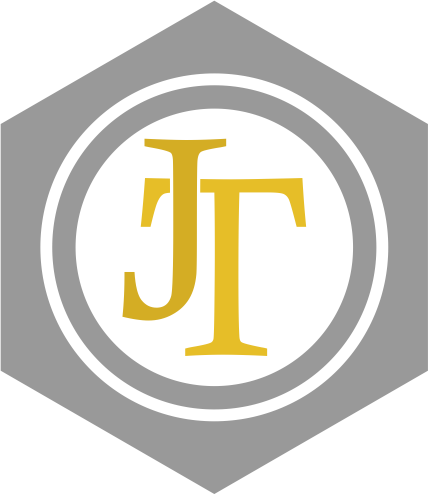Metal recovering through recycling of printed circuit boards from computer devices using tabling and magnetic concentration methods
Abstract
Keywords
Full Text:
PDFReferences
Puckett J, Byster L, Westervelt S, Gutierrez R, Davis S, Hussain A, Dutta M (2002) Exporting harm—the high-tech trashing of Asia; The Basel Action Network (BAN) Silicon Valley Toxics Coalition (SVTC): Seattle, WA, USA
https://www.globalewaste.org/ (2020). The Global E-waste Monitor 2020-Quantities, flows, and the circular economy potential. Diakses pada 25 November 2021,https://ewastemonitor.info/wp-content/uploads/2020/11/GEM_2020_def_july1_low.pdf
Kementrian lingkungan hidup. (2021, 14 Oktober). Webinar pengelolaan sampah. Diakses pada 25 November 2021, https://sipsn.menlhk.go.id/download/ewaste2021/Sambutan_Dirjen_webinar_Ewaste_14_Okt_21.pdf
Kaya M (2018) Current WEEE recycling solutions, Chap. 3. In: Veglio F, Birloaga I (eds) Waste electrical and electronic equipment recycling, aqueous recovery methods, pp 33–93. https://doi.org/10.1016/B978-0-08-102057-9.00003-2
Sun Z, Cao H, Xiao Y, Sietsma J, Jin W, Agherhuis H, Yang Y (2017) Towards sustainability for recovery of critical metals from electronic waste: the hydrochemistry processes. ACS Sustain Chem 5:21–401.
Zhang, Y., Liu, S., Xie, H., Zeng, X., & Li, J. (2012). Current Status on Leaching Precious Metals from Waste Printed Circuit Boards. Procedia Environmental Sciences, 16, 560–568. doi:10.1016/j.proenv.2012.10.077.
Shi, S., Nie, C., Chang, H., Wu, P., Piao, Z., & Zhu, X. (2021). Physical pre-concentration and ammonium leaching of metal copper from waste printed circuit boards. Journal of Cleaner Production, 318, 128512.
Liu, F., Chen, W., Wan, B., Chen, H., Ling, Z., Chen, Z., & Fu, Z. (2020). Recovery of high-grade copper from metal-rich particles of waste printed circuit boards by ball milling and sieving. Environmental Technology, 1–19.
Vidyadhar, A., Chalavadi, G., & Das, A. (2013). Stratification and segregation features of pulverized electronic waste in flowing film concentration. Journal of Environmental Management, 118, 49–54. doi:10.1016/j.jenvman.2013.01.012.
Jianjun, H. et al. (2004) ‘DC Arc plasma disposal of printed circuit board’, Plasma Science and Technology. doi: 10.1088/1009-0630/6/4/016.
Szałatkiewicz, J. (2014). Metals content in printed circuit board waste. Polish Journal of Environmental Studies, 23(6), 2365–2369.
de Oliveira, C. M., Bellopede, R., Tori, A., Zanetti, G., & Marini, P. (2022). Gravity and Electrostatic Separation for Recovering Metals from Obsolete Printed Circuit Board. Materials, 15(5), 1–11. https://doi.org/10.3390/ma15051874
Tuncuk, A., Stazi, V., Akcil, A., Yazici, E. Y., & Deveci, H. (2012). Aqueous metal recovery techniques from e-scrap: Hydrometallurgy in recycling. Minerals Engineering, 25(1), 28–37. doi:10.1016/j.mineng.2011.09.019
Gaudin, A.M. 1939. Principles Of Mineral Dressing, Mc Graw Hill Book Company, New York
ZHANG, S., FORSSBERG, E., 1999. Intelligent liberation and classification of electronic scrap, Powder Technology. 105, 295-301.
Burat, F., & Özer, M. (2018). Physical separation route for printed circuit boards. Physicochemical Problems of Mineral Processing, 54(2), 554–566. https://doi.org/10.5277/ppmp1858
Batalovi´c, V., 2011. Centrifugal separator, the new technical solution, application in mineral processing. Int. J. Miner. Process 100 (3-4), 86–95.
Lim, J., Yeap, S. P., & Low, S. C. (2014). Challenges associated to magnetic separation of nanomaterials at low field gradient. Separation and Purification Technology, 123, 171–174. doi:10.1016/j.seppur.2013.12.038
Lide, D. R., ed. (2005). "Magnetic susceptibility of the elements and inorganic compounds". CRC Handbook of Chemistry and Physics (PDF) (edisi ke-86). Boca Raton (FL): CRC Press. ISBN 0-8493-0486-5.
Yoo, J.-M., Jeong, J., Yoo, K., Lee, J., & Kim, W. (2009). Enrichment of the metallic components from waste printed circuit boards by a mechanical separation process using a stamp mill. Waste Management, 29(3), 1132–1137. doi:10.1016/j.wasman.2008.06.035
DOI: http://dx.doi.org/10.36055/tjst.v19i1.17511
Refbacks
- There are currently no refbacks.
Copyright (c) 2023 Teknika: Jurnal Sains dan Teknologi

This work is licensed under a Creative Commons Attribution-NonCommercial-ShareAlike 4.0 International License.
Teknika: Jurnal Sains dan Teknologi is licensed under a Creative Commons Attribution-NonCommercial-ShareAlike 4.0 International License.
















